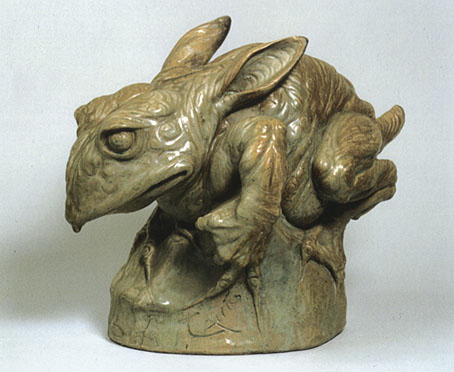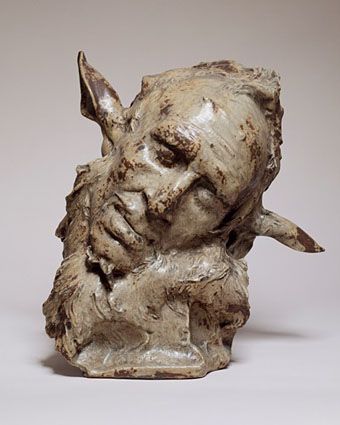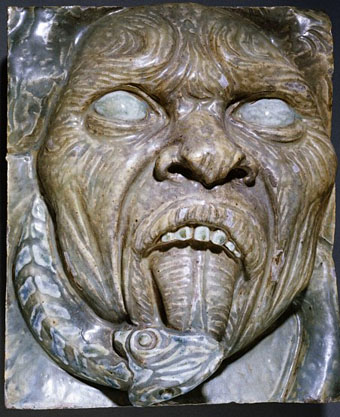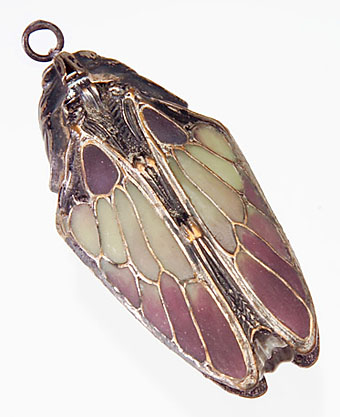Metamorphosis (2006).
One of a series of “surrealistic digital portraits” by Almacan aka Kazuhiko Nakamura.
Previously on { feuilleton }
• The sculpture of Christopher Conte
• Pierre Matter’s cyborg sculpture
• Insect Lab
A journal by artist and designer John Coulthart.
Art
Metamorphosis (2006).
One of a series of “surrealistic digital portraits” by Almacan aka Kazuhiko Nakamura.
Previously on { feuilleton }
• The sculpture of Christopher Conte
• Pierre Matter’s cyborg sculpture
• Insect Lab
Voyage de Nuit (etching/engraving; no date).
Michael Goro’s etchings and engravings are rich with the kind of gritty urban verisimilitude I love. His site has several more examples and there’s a good interview with the artist here.
Michael Goro, a prominent intaglio printmaker, has lived and worked in Russia, Europe, Israel, and the U.S. His work has received a number of prestigious international awards including Special Prize at the 1998 International Print Triennial in Kanagawa, Japan and Excellent Prize at the 2006 14th Seoul Space International Print Biennial at the Seoul Museum of Art (Korea). He describes his art as a “continuous creative search for raw authenticity in urban environments and human forms that are constantly changing.” Utilizing the full spectrum of printmaking techniques, ranging from Renaissance engraving to digital photogravure, he shares his unique personal experiences through imaginative imagery.
Thanks to PK for the tip!
Reflections (etching; no date).
Previously on { feuilleton }
• The etching and engraving archive

Dragonfly woman corsage ornament (1897–1898).
Gold, enamel, chrysoprase, moonstones, and diamonds.
Seeing as dragonflies emerged as a theme this week I can’t resist mentioning my favourite of all, this bizarre confection by glass artist and jeweller René Lalique (1860–1945), a dragonfly with female torso and gryphon claws. This was owned by wealthy Armenian collector Calouste Gulbenkian (in whose museum it now resides) and was worn once by Sarah Bernhardt. You can barely tell from this picture but the delicate gold wings are hinged at several points so they wouldn’t be obtrusive for the wearer.

The Lalique company made more glassware than they did jewellery and these included a range of unique automobile mascots whose pedestrian-puncturing potential saw them banished to museum cabinets as road safety laws evolved. The dragonfly design was an especially splendid example, being placed above a multicoloured disc lit from beneath which rotated in accordance with the speed of the car. The faster the car travelled, the faster the colours changed.
Previously on { feuilleton }
• Lucien Gaillard
• Wesley Fleming’s glass insects
• The glass menagerie

The Frog with Rabbit Ears (1891).
La matière de l’étrange, an exhibition of ceramic grotesques by Jean Carriès is currently running at the Petit Palais, Paris, through to January 27th, 2008. Carriès doesn’t feature in any of my books about eccentric or fantastic artists which I find surprising, his work is very peculiar by 19th century standards, looking like the creation of a Rodin obsessed by Lautréamont. Carriès’ series of “horror masks” are so similar to the earlier series of heads by sculptor Franz Messerschmidt I suspect there may be an influence there. And like Rodin, Carriès also had unsuccessful plans for a monumental gateway ornamented with his figures and scowling faces. Unlike Rodin, his plaster draft of the work was destroyed by a criminally unsympathetic curator but the Petit Palais exhibition attempts a reconstruction based on a model by Eugène Grasset.
Thanks to Nathalie for the tip!
• English article at The Art Tribune
• French page with video of the exhibition

Head of a Faun (1890–92?).

Grotesque mask, element for the Monumental Door (1891–94).
Elsewhere on { feuilleton }
• The fantastic art archive
Previously on { feuilleton }
• The Masks of Medusa
• Bernini’s Anima Dannata
• The art of Franz Xaver Messerschmidt, 1736–1783
• The art of Stanislav Szukalski, 1893–1987
Two dragonflies (1904).
Art Nouveau insect jewellery by Lucien Gaillard (1861–1933).

Perfume bottle (?) (c. 1923).
Moth pendant (1900).
And while we’re on the subject, a display of precious stones and metals has opened at London’s Natural History Museum in a new gallery they’re calling The Vault.
Previously on { feuilleton }
• Wesley Fleming’s glass insects
• The art of Sergei Aparin
• Insect Lab
• The glass menagerie
• The Museum of Fantastic Specimens